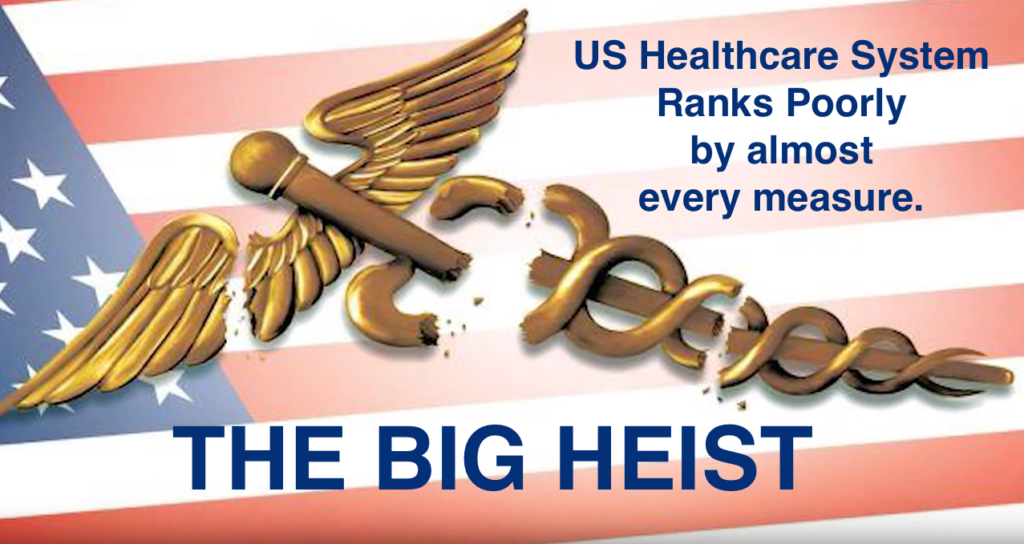The Medical Cartel is Keeping Health Care Costs High
 By Travis Klavohn and Dr. Laura Williams
By Travis Klavohn and Dr. Laura Williams
In 2010, the small town of Collegedale, Tennessee had the dubious distinction of having the highest prevalence of Type II Diabetes in the world. Without a single endocrinologist in the small town, those suffering from this preventable and treatable form of the disease were unable to gain access to the treatment they needed.
Dealing with this issue firsthand, a local employer who operates a donut manufacturing plant decided to dedicate a portion of his warehouse to be used as a health clinic. By hiring an endocrinologist from Chattanooga to travel to his warehouse a few days a week, his employees were finally able to receive the help they so desperately needed.
The employer reasoned that the prices associated with the hiring of an endocrinologist were actually less costly for the company than the insurance expenses related to the disease.
The donut maker’s free market solution solved the problem of constrained supply of medical professionals for his employees. But this disconnect between supply and demand exists far beyond Collegedale. In fact, the country is experiencing a shortage of doctors in virtually all specialties and every state, which begs the question, where are all the doctors?
A Choreographed Shortage of Care
Though few Americans realize it, health care is a monopoly. In the early 20th century, the American Medical Association (AMA) lobbied the Federal government to close all schools not approved by its own Council on Medical Education. They unfortunately succeeded and 30 percent of medical schools were closed within 30 years. The number of doctors has been artificially capped ever since.
The AMA also controls state boards of licensing, limiting the number of physicians in each state and preventing competitors from treating patients. The United States has 50 percent fewer practicing physicians per capita than Sweden or Germany. Unsurprisingly, US doctors also work fewer hours while earning much higher salaries.
Even as the US population and its demand for medical services continue to expand dramatically, the number of new doctors educated by “approved” schools and licensed by state boards hasn’t improved. In fact, two-thirds of highly qualified medical school applicants are turned away each year.
Licensing quotas and arbitrary caps set by state boards literally make it illegal to train a single additional candidate in the medical field. Inevitably, where there is a shortage, prices rise for everyone. This results in smaller and poorer markets being shut out altogether. Even if the additional physicians were “B list” doctors from sub par medical schools, smaller towns like Collegedale would still be better off with a “B-” doctor than no doctor at all.
Cartels Protecting Doctors
Both directly or indirectly, the AMA also controls the prices paid to physicians, the licensing of physicians, the accreditation of medical schools, admittance into medical schools, and the payment policies of insurance companies. The AMA runs on membership fees, and its mission is protecting the interests of current doctors, not the American public.
Fewer doctors mean higher salaries, less competition, and more negotiating power for physicians. This is allowed to happen because physicians, like any other group of citizens, are free to associate and express their interests through donations.
What should outrage all US patients is the collusion of our government under the guise of protecting the public interest by requiring licenses and letting a cartel of campaign donors say who can have one.
Not only can the cartel set prices but the taxpayer is also forced to fund the muscle to shut down and jail those caught trying to circumvent the government-protected monopoly.
Similar federal regulatory monopolies prevent generic drugs from competing with big brands, block the building of new health care facilities, and limit health insurers to two or three per state. Our health care options shrink as special interests’ regulatory control grows resulting in fewer drugs, fewer doctors, fewer plans, and fewer choices.
Less Government, More Choices
Like US consumers in all markets, the residents of Collegedale need the freedom to access more health care choices. Allowing lobbyists to block out competition limits everyone’s choices and forces them to pay higher prices for less access to care.
If Americans want real choice, they need to demand that Congress end the AMA’s control of medical school enrollments and licensing. If more Americans could become doctors without first asking the government’s permission, more Americans could receive medical care without the state’s help.
About the Authors
Travis Klavohn is a management consultant, political activist for limited government, and a resident of Georgia’s 13th Congressional District.
Dr. Laura Williams teaches communication strategy to undergraduates and executives. She is a passionate advocate for critical thinking, individual liberties, and the Oxford Comma.
mHealthTalk Editor’s Perspective
I’m happy to repost this article, which was originally published on FEE.org and is licensed under a Creative Commons Attribution 4.0 International License. The views presented closely match my own. Here are some of the reader comments I added to the original article.
COMMENT-1: I loved the title, because I too see this as a Medical Cartel, and I’m sure Steven Brill would as well. In his TIME report, Bitter Pill: Why Medical Bills are Killing Us, Brill describes the Medical Industrial Complex [Cartel] as hospitals, insurers, drug companies, testing companies, and equipment providers. To protect their perverse profits and $3.5 trillion/year revenue stream, they spend more than three-times as much on political lobbying as the Military Industrial Complex. With so much money at stake, Cartel seems to fit the vocabulary.
As for the scarcity of doctors, I see a bigger problem. It’s what they are taught, or not taught, in AMA-accredited medical schools. From Day-1, they learn to diagnose and treat illness and injury, with relatively little time learning about prevention or the pillars of health (nutrition, exercise & sleep). That just reinforces and fuels the Fee-for-Service business model of U.S. Healthcare that encourages doctors to test more, treat more, and prescribe more, thus driving up overall costs of health care.
This is why, here at Modern Health Talk, I cannot completely endorse the Democrats’ call for a Single-Payer Universal Health Care system and say that even Medicare-for-All is Not Enough. We also need to improve the delivery system, breaking away from fee-for-service, and focus more on wellness and prevention.
COMMENT-2: One reader mentioned the need for Tort Reform as contributing to the high costs, but that’s just untrue. Tort reform makes the real problem – medical errors – worse by preventing legitimate lawsuits that would act as a natural deterrent.
According to the film, Escape Fire: The Fight to Rescue America’s Healthcare, “30,000 medical care recipients die each year from medical errors, or care they don’t need. That’s the equivalent of a jumbo jet airliner crashing each week. If the aviation industry killed that many people, we’d be up in arms.” So clearly we have a medical errors problem, not a frivolous lawsuit problem.
COMMENT-3: As the exponentially accelerating pace of tech innovation enables medical devices to continually get smaller, cheaper, more accurate, and easier to use, more & more medical functions will move down-market from physician specialists in clinics and hospitals to physician assistants, nurse practitioners, nurses, technicians, and consumers themselves at home or wherever they are. This trend is not only driven by tech getting smaller and embedded, thus enabling remote monitoring services; but it’s also driven by AI in the cloud, through systems like IBM Watson. (Moore’s Law and the FUTURE of Healthcare)
With that said, I don’t think the problem is a shortage of doctors, or hospital beds. But I do agree it has much to do with the immense opposition from those who’d lose over $1.5 trillion/year if our healthcare costs were cut in half to match what other advanced nations spend for their better outcomes.
As a retired IBM technologist and consumer advocate, I remain optimistic that meaningful reforms will come, because the tech enablers are there, and so is the market need; but my optimism is dampened by the corrupting influence of big [Cartel] money in politics. As I watch what Congress is trying to do with healthcare, it’s clear to me that to truly fix healthcare, we must first fix government. That loops back to my optimism, because hordes of protesters have learned more than ever about their healthcare system, and about politics. And their vocal activism is a sign of progress.


RELATED ARTICLES:
The Shocking Truth about Medical Malpractice (referralMD) I commented.